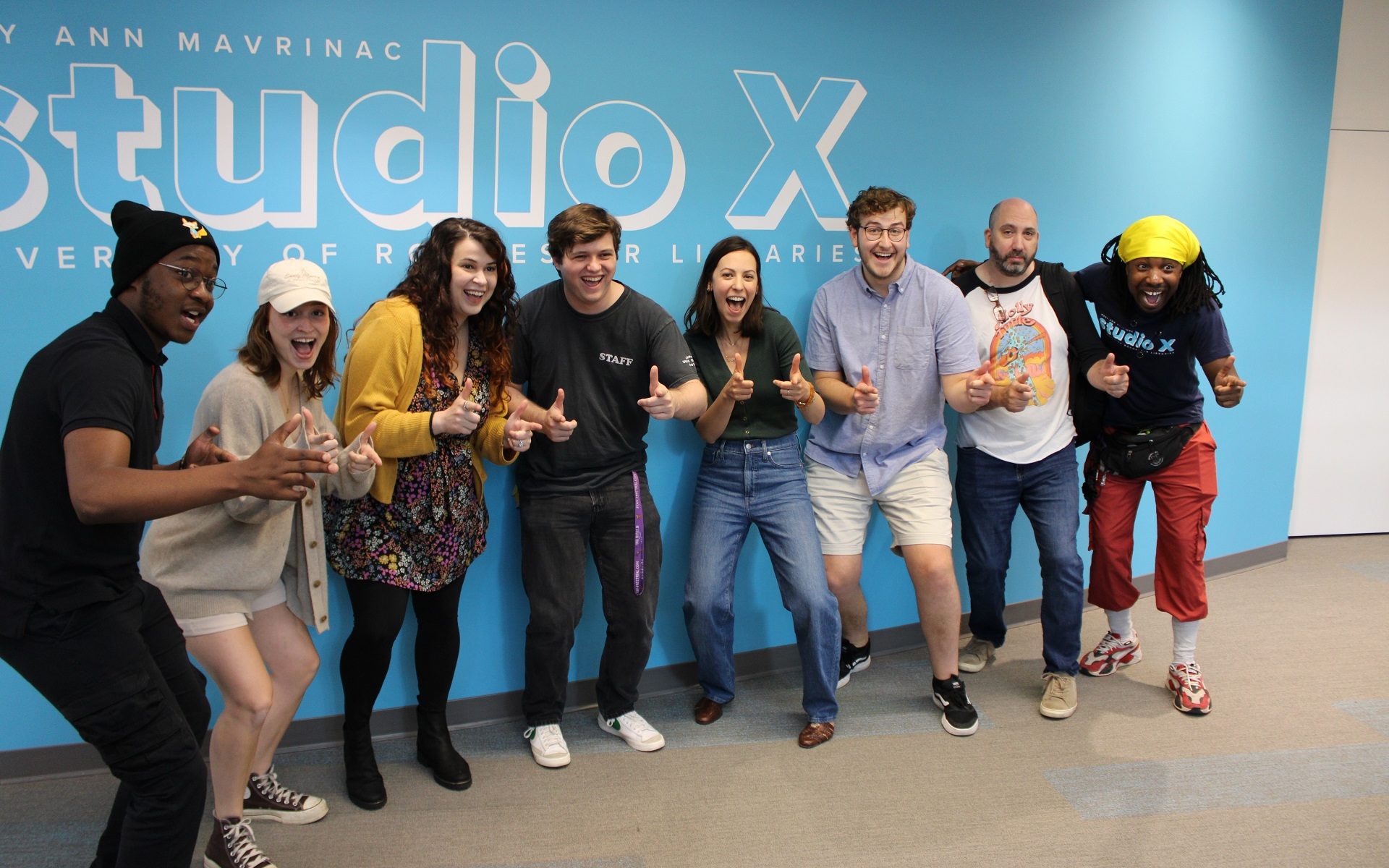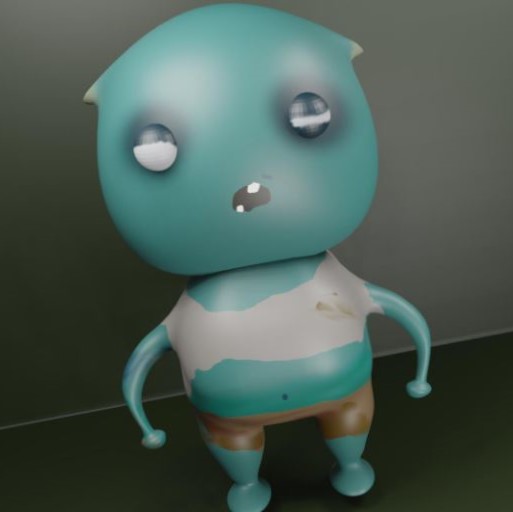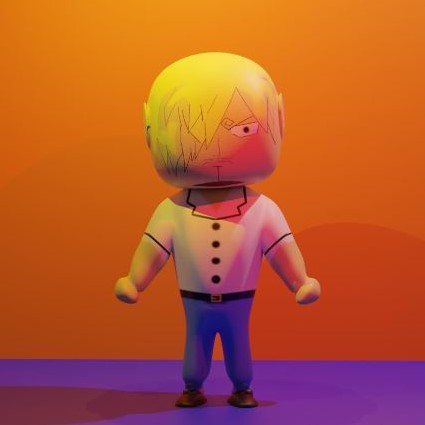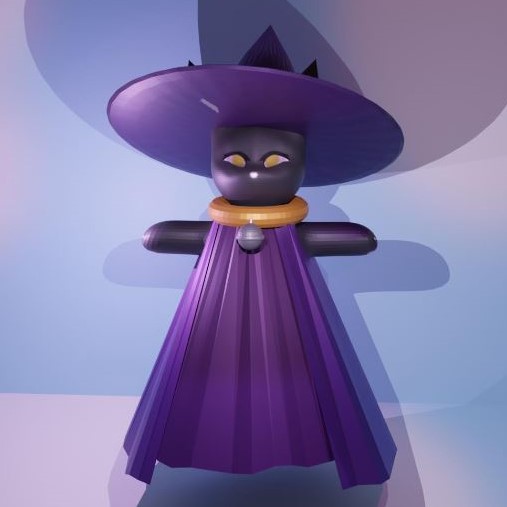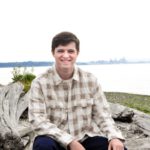Starting as an XR Specialist at Studio X meant that I needed to learn about all the hardware and software that we provide for use to patrons and utilize ourselves in projects. We have such a wide variety of tools for all different purposes, so it was really cool to work through each device and really understand how they work and the best places and times to use them. For example, I had never used a 3D scanner like the EinScan. This device takes a ton of photos of an object while rotating it and testing it under different light patterns to determine texture. I was super curious as to how detailed it could render different objects under different lighting conditions, especially since usually it’s recommended that the scanner be used in dark places. It turned out that the way the machine works with light allows it to recreate objects even in brighter locations, which is really impressive. I also took great interest in the Lumepad, which brought me back to the days of the Nintendo 3DS. The Lumepad sports a screen with a 3D affect that makes images and videos pop out. There was a suite of different 3D objects and a scene from a movie. This tablet brought a new layer of immersion to simple images that, I feel, get overlooked. We also were donated a Kat C2 VR, which is essentially an omnidirectional treadmill meant for VR movement. It uses these shoes that act similarly to computer mice with a sensor on the bottom of each, tracking how your foot moves across the platform. It also harnesses you in, so you stay in the same spot. The trouble was that the receiver was broken so it wasn’t being picked up when we connected it to the computer. After weeks of conversing with the original owner and the team over at Kat, I eventually received a new receiver that worked perfectly !
I also ended up working with a number of patrons during this time, which showed me the power of learning through teaching, as I needed to figure out how to communicate with and direct someone who is in VR – someone seeing a simulation that I can’t physically view at the same time. This required me to have a certain level of knowledge of the hardware and software and any potential stumbling blocks for patrons. I was also able to participate in consultations with faculty and staff from the medical center as well as the chemistry and classics departments. This further proved to me how multidisciplinary XR truly is and how dedicated and invested our faculty are in figuring out new ways to teach their content. I consulted with Brandon Barnett and Bill Brennessel from the Department of Chemistry to determine the usability of a virtual reality 3D molecule visualizer Nanome in the classroom. It was an absolute pleasure to work with them as we worked together to test the compatibility of the app with their teaching material. The two main pieces of software that we work with in Studio X are the 3D modeling and animation software Blender and the game development software Unity. I came to Studio X with some experience in Blender but not as much in Unity, so I completed large portions of Unity’s Create with Code and Create with VR courses, which provided me with a perfect baseline for the software before going into pre-college.
Studio X’s pre-college program “Dreaming New Realities: Interactive Storytelling with Extended Reality” invites high school students from across the country to create 3D models and design and develop VR experiences. Preparing for pre-college took up most of our time this summer, as we ended up making numerous tweaks to our material and structure of the 10 days, we had with the 17 students. In particular, I focused on some of our written materials and expanded the design prompts to include more open-ended projects with intentional storytelling elements. I utilized my knowledge and skills in UX/UI to create a project design document that was easy to read and understand, delving into font types, color, and opacity to impart intention and avoid confusion. During pre-college, I spearheaded the Intro to Blender and the Character Creation workshops and taught the students how to edit primitive objects into models that resembled their previously conceived character. There were so many interesting and unique designs this year ranging from a Troll to Sanji from One Piece to a cat witch.
During week 2 of the program, the students used Unity to create their VR experiences. This portion really taught me how powerful learning from teaching is, as I learned a great deal more by troubleshooting projects and reiterating instructions to students. I also learned a ton about how textures and materials interact with objects across Blender and Unity.
Helping run our pre-college program was such a motivating and satisfying experience. I love to see students embrace their creativity in different ways. Some wanted to focus on making hyper-detailed environments while others wanted to make a tribute to their favorite musicians. It was fascinating to see how their projects progressed across such a wide breadth of projects spanning different genres and art styles.
After pre-college, I had more time to engage with the River Campus Libraries (RCL) community. While I had met a number of staff members already, I had more time to get to know them before the start of the fall semester. I participated in group events such as the Physics-Optics-Astronomy Library’s Towers and Tabletops event, in which RCL staff and students got together to play board games. I went to grab coffee with a number of different colleagues and participated in the RCL Summer Challenge event. All these activities allowed me to really get to know a lot of the RCL staff and bond with my coworkers. It also showed me the importance of getting to know the people you work with as it heightens the motivation to do our absolute best at any task that comes across our desk.
Overall, this summer was a perfect balance of training, teaching, learning, and socializing. I got to work with so many different people of different disciplines across the River Campus Libraries and beyond. I spent time developing my skills as an XR specialist and UX/UI designer through various projects. I felt that I really got to know the RCL staff more personally. I got to understand how the libraries function as a whole and how vital many of the spaces are to keeping the machine running and providing the student body with resources. RCL provides so much to the University of Rochester campus so, especially if you’re a student, I implore you to explore these resources as they can oftentimes go overlooked or underutilized.

